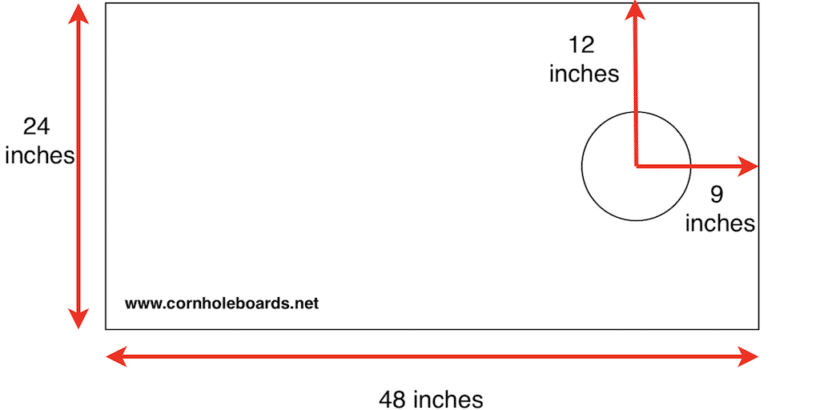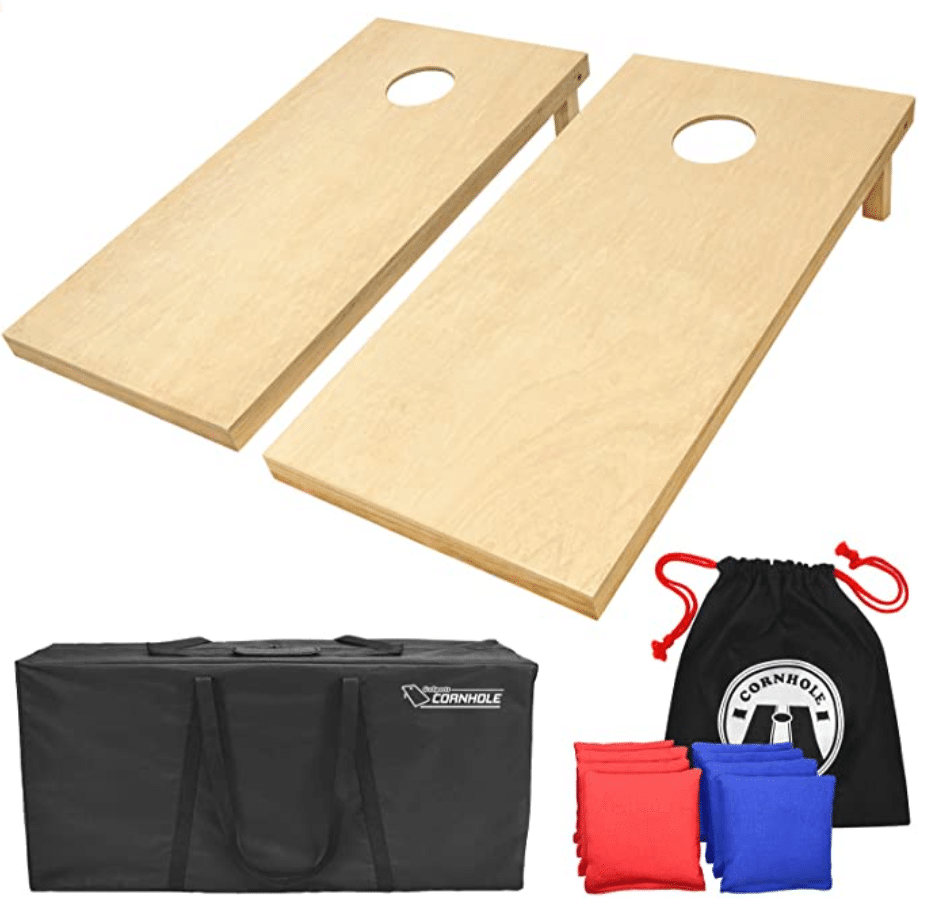If you’re going to be making your own cornhole board then you definitely need to know about the proper cornhole board dimensions. And even if you’re just purchasing your own cornhole board you still need to know about the proper dimensions for a regulation-sized cornhole board. So here’s everything you need to know about cornhole dimensions.
Get a quality cornhole board set right now!
Check out my #1 recommendation for a quality cornhole board set that is perfect for beginners.
Cornhole court dimensions
First, it’s a good idea to know how far apart cornhole boards should be from each other.
The official guide lines state that they should be 27 feet apart, measured from edge to edge. However, some people like to play 24 feet apart (especially if they have “tailgate” sized cornhole boards. Also, keep in mind that juniors should be 21 feet from the edge of the cornhole board they are tossing to.
You can read more about how to set up a good cornhole court here.
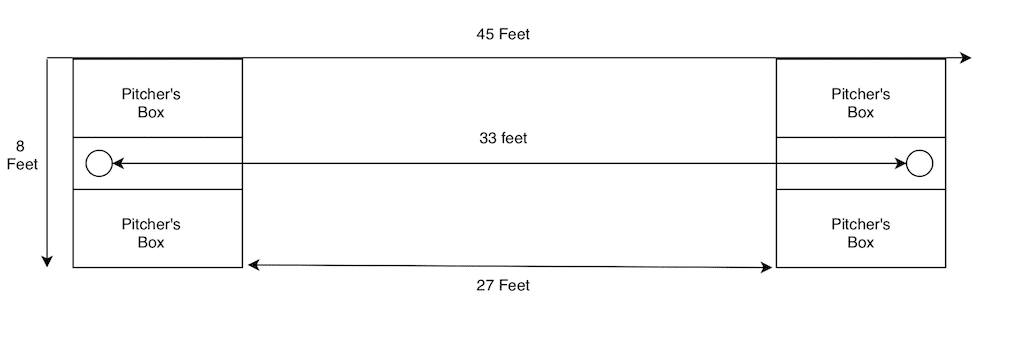
Cornhole board dimensions
Here are the ACO cornhole board dimension standards for ACO approved boards:
- Hardwood plywood playing surface measuring 47.5” to 48” x 23.5” to 24”
- Playing surface with a minimum thickness of 1/2” with cross-section backing, or 3/4” with or without cross-section backing.
- Each hole is 6” diameter, centered 9” from the top of the board and centered from each side edge.
- The front of the board is 3” to 4” from the ground to the top of the playing surface.
- The back of the board is 12” from the ground to the top of the playing surface.
- The playing surface should be finished – sanded to a very smooth texture. There should be little to no blemishes in the wood surface that may disrupt or distort play.
- The playing surface can be painted with a high gloss latex paint or varnish. The surface should allow bags to slide when thrown, but not be so slippery that the bags slide back down the platform.
I’ll discuss each one of these requirements in detail.
Playing surface dimensions of 48” by 24”
The playing surface is another name for top of the cornhole board where the bean bags actually land (or at least where you hope they land). You might be a little surprised to see that the official ACO approved boards don’t have to be exactly 24 by 48 inches since they allow you to err on the (slightly) smaller side.
With that said, I would still probably shoot for the 48″ by 24″ since that does seem to be the standard with most boards and it just is a nice even number. It’s also 1,000x easier to find pre-cut plywood in sizes 48″ by 24″.
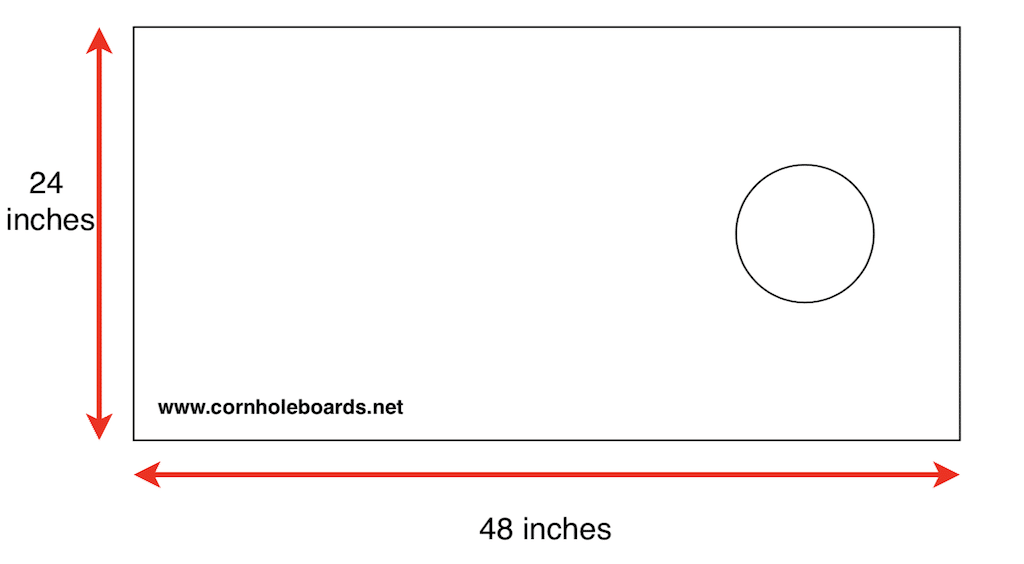
If you are someone who just likes to tailgate and you really value portability, then you could always consider going with a “tailgate sized” cornhole board. These boards are the same width but they are only three feet in length, making them much easier to carry around and store. They are also cheaper, too.
You can find one of these tailgate cornhole boards here on Amazon.
Playing surface with a minimum thickness of 1/2” with cross-section backing, or 3/4” with or without cross-section backing.
The major issue you’re trying to prevent here is bouncing because quality cornhole boards don’t bounce or at least bounce very little.
With a 3/4″ thick playing surface, you should find that sufficient to prevent bouncing but some people still like to go the extra mile and add cross-section backing to reduce bouncing as much as possible.
Cross section backing is merely a support bar that runs though the middle from one side of the cornhole board to the other. You can see where a cross section backing support bar would run in the diagram below.
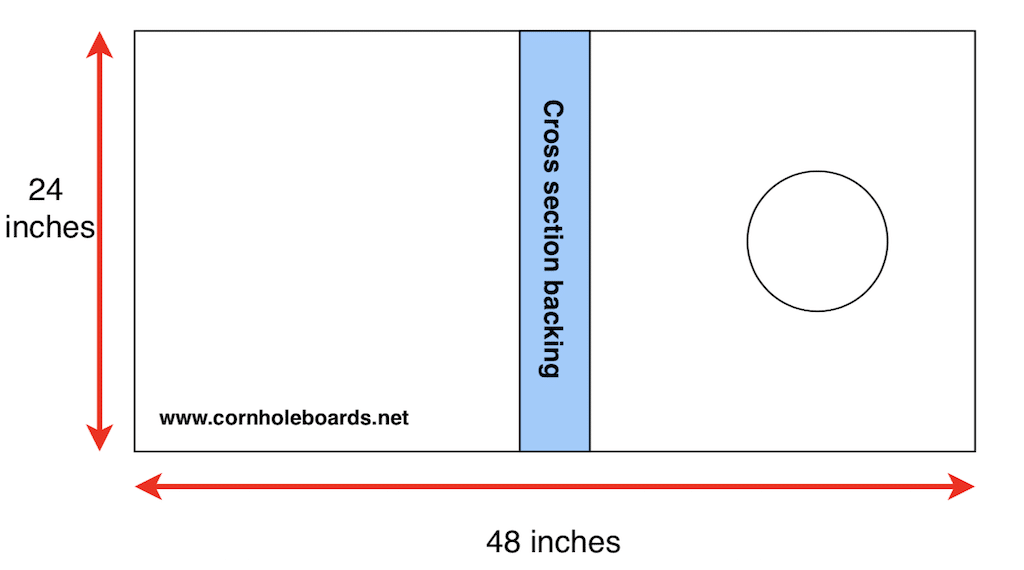
If you go with 1/2″ thickness then you definitely want to add cross-section backing or else you might experience some pretty bad bouncing. Some people even add two supporting bars while others don’t even feel like they need single support bar.
Each Board in a set should weigh no less than 25 lbs.
Note that this is the minimum requirement not the maximum. So if you’ve added multiple supporting cross sections to your cornhole board and went with a thick 3/4″ playing surface, you’ll definitely meet this requirement.
But you really need to think about portability. A super thick and heavy cornhole board is going to be bulky and a pain to bring out everywhere.
Each hole is 6” diameter, centered 9” from the top of the board and centered from each side edge.
The first thing to note here is that the cornhole circle is 6 inches in diameter. The diameter is the distance from one side of the circle to the other and is shown by the blue arrow below. Don’t get it confused with the radius which is half the distance of the diameter.
The center of the hole needs to be centered 9″ from the top and also centered in the middle of the 24″ top of the board.
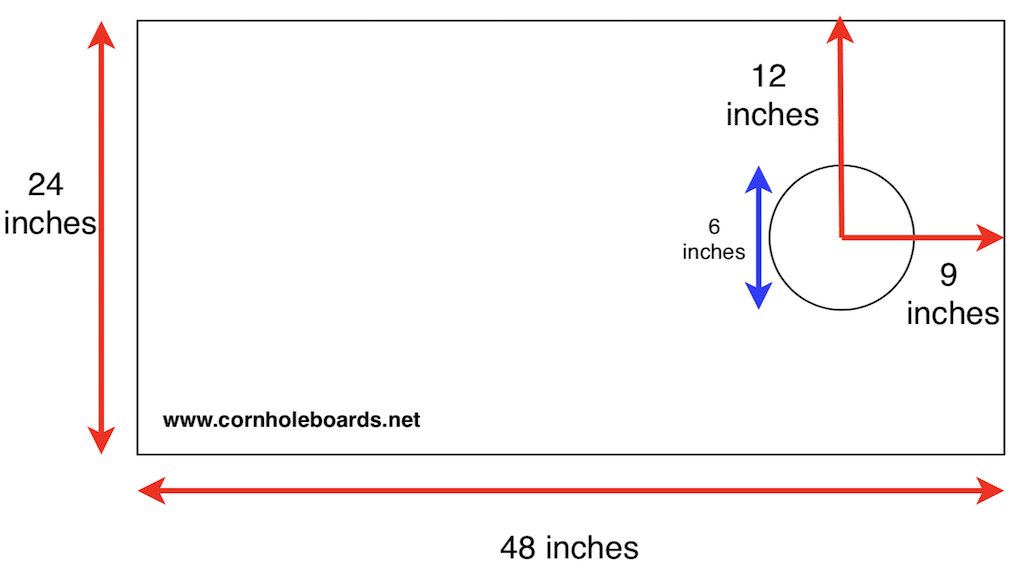
The front of the board is 3” to 4” from the ground to the top of the playing surface.
The front of the board should only be 3″ to 4″ from the ground to the top of the playing surface. The exact amount will depend on the thickness of your plywood playing surface since most will be using 2×4″s for the frame of the cornhole board.
The back of the board is 12” from the ground to the top of the playing surface.
The diagram shows that you want the top of the playing surface a foot off the ground.

The playing surface should be finished – sanded to a very smooth texture. There should be little to no blemishes in the wood surface that may disrupt or distort play.
You want to sand these boards down as good as you can because these bags need to be able to slide around on the playing surface on the cornhole board.
You want everything to be smooth, especially the circle where the bags go through. If there are blemishes on the board, you can guarantee that the game play will be affected. Many like to use orbital sanders to ensure the smoothness of the final product.
Get a quality cornhole board set right now!
Check out my #1 recommendation for a quality cornhole board set that is perfect for beginners.
The playing surface can be painted with a high gloss latex paint or varnish. The surface should allow bags to slide when thrown, but not be so slippery that the bags slide back down the platform.
I recommend you sand the board before you paint a primer and then sand it lightly once again. That should get the board nice and smooth but the polyurethane layers (or similar varnish) that you put on later will really give it that slick finish.
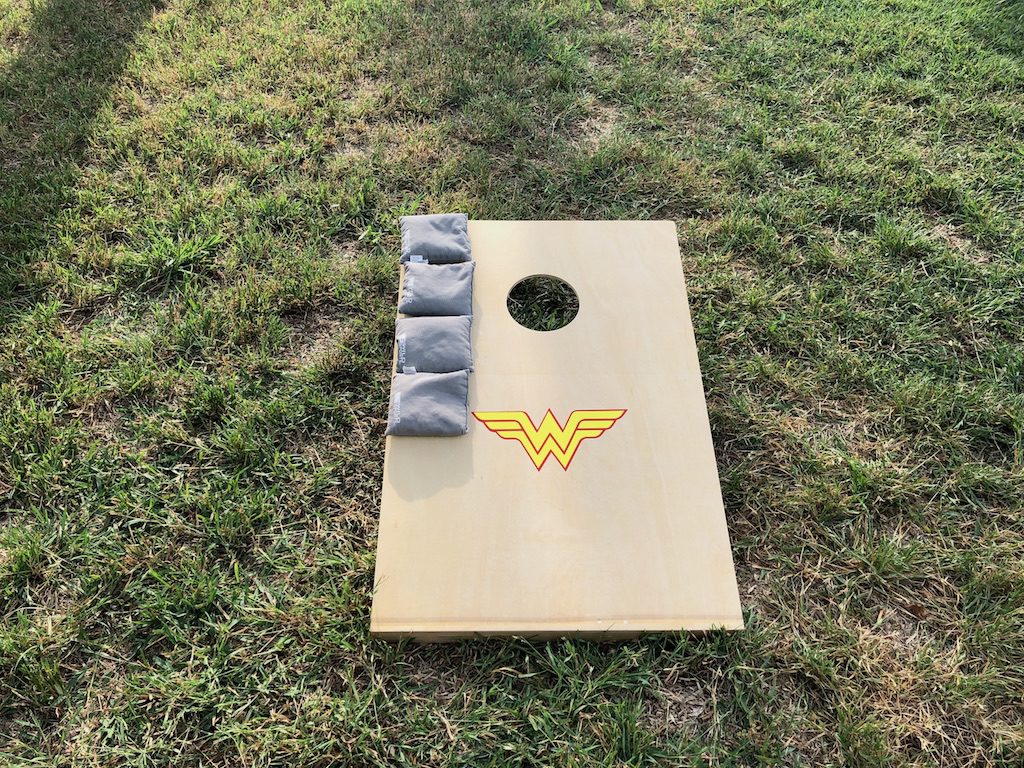
Cornhole bag dimensions
Since you’ve got everything in order for the cornhole board dimensions you might as well make sure you know what you’re doing with your cornhole bags.
Cornhole bags should be 6” by 6” and weigh 15 to 16 ounces. They also should be made out of certain materials and stitched in certain ways. You can read more about proper cornhole bags here. Also, if you’re debating on whether or not you should cornfeed or plastic pellet filled cornhole bags, you can read more about that debate here.
Final word on cornhole board dimensions
Most people will want a regulation sized cornhole board and so they will go with 24″ by 48″ cornhole board dimensions. However, other people, such as those who do a lot of tailgating, might want to look into “tailgate” sized cornhole boards.

